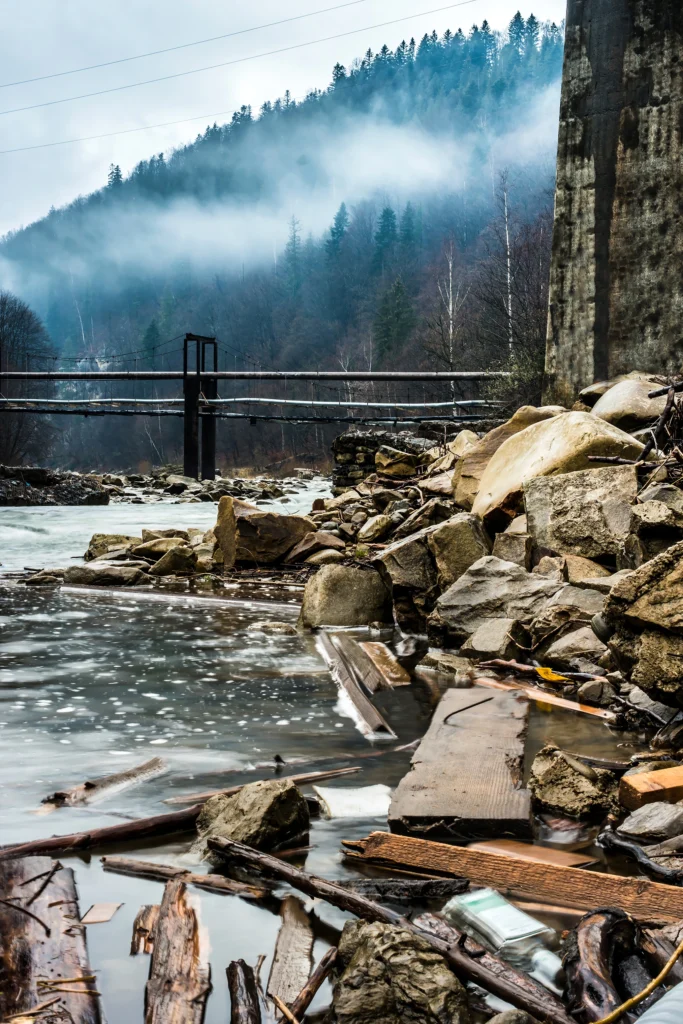On July 16, 2025, a significant seismic event took place off the southern coast of Alaska, sending shockwaves through the region and sparking widespread concern. A 7.3-magnitude earthquake struck, followed by a tsunami alert that triggered evacuations and heightened fears of potential devastation. Thankfully, the situation was resolved without major damage or casualties, but the event serves as a critical reminder of the constant seismic activity in the region and the importance of being prepared for natural disasters. In this article, we will take a deeper look at what happened, the measures taken to protect communities, and the ongoing risks posed by the region’s geology.

The Earthquake: A Powerful Tremor Hits Alaska
On the afternoon of July 16, 2025, at approximately 12:37 p.m. local time, an earthquake with a magnitude of 7.3 struck the Aleutian Islands, located off the southern coast of Alaska. The earthquake’s epicenter was around 54 miles south of Sand Point, a small community in the region.
Alaska sits on the Pacific “Ring of Fire,” a seismic hotspot where the Pacific tectonic plate meets others, leading to frequent earthquakes and volcanic activity. The region has experienced significant earthquakes in the past, including the devastating 1964 earthquake, which remains one of the most powerful earthquakes ever recorded in North America. The 7.3-magnitude tremor was one of the largest in recent years, and its impact was felt across much of the Aleutian Islands. The earthquake was strong enough to cause some ground shaking, though the immediate damage was limited.
Despite the intense shaking, no reports of structural damage or loss of life came in the hours following the tremor. However, given the region’s susceptibility to earthquakes and tsunamis, authorities took swift action to monitor the situation and warn residents of potential danger.
The Tsunami Warning: Initial Alerts and Evacuations
Immediately after the earthquake, the National Oceanic and Atmospheric Administration (NOAA) issued a tsunami warning for several coastal communities in Alaska. These warnings, which were issued for areas such as Kodiak, Sand Point, Unalaska, and King Cove, were based on the potential for large tsunami waves that could cause significant destruction along the coastline. The tsunami warning advised people living in low-lying coastal areas to evacuate to higher ground to avoid the possibility of a deadly tsunami.
The tsunami threat was serious. Tsunamis are massive ocean waves that can be generated by undersea earthquakes and have the potential to cause catastrophic flooding, especially in coastal regions. Because of Alaska’s geographic location along active tectonic plate boundaries, the state is highly vulnerable to both earthquakes and tsunamis. The region has experienced large tsunami events in the past, and residents know the importance of responding quickly to evacuation orders when such warnings are issued.
Local emergency services sprang into action, with shelters being set up and residents urged to move inland and to higher ground. In Kodiak, the police department opened local schools as evacuation centers, while in Sand Point and Unalaska, officials advised residents to move at least 50 feet above sea level and one mile inland, away from the inundation zones.
At this stage, fear and uncertainty were widespread, as people waited anxiously for further information. However, NOAA continued to monitor the situation closely, and after further analysis of the seismic activity and wave patterns, it became clear that the tsunami threat was not as severe as initially anticipated.

The Downgrade: A Small Tsunami and No Significant Damage
As the day progressed, the tsunami warning was gradually downgraded to a tsunami advisory, and by the evening, it was completely lifted. The small tsunami waves that were generated by the earthquake were measured at just 0.2 feet in Sand Point, far smaller than the damaging waves that many had feared.
There were no reports of significant flooding or destruction along the affected coastal areas, and the initial fears of a devastating tsunami were quickly alleviated. In fact, the earthquake’s aftershocks were the only remaining concern, with more than 20 aftershocks recorded in the following hours. The largest aftershock measured a magnitude of 5.2, which was strong enough to shake the region further, though it was not large enough to cause additional damage.
While the tsunami threat had subsided, this event highlighted the effectiveness of Alaska’s emergency response system and the preparedness of local authorities. The swift action to issue warnings and evacuate residents helped mitigate potential risks and keep people safe in the face of uncertainty. Although the immediate danger had passed, the event demonstrated the importance of maintaining a constant state of preparedness for future seismic events.
Alaska’s Seismic Risk: A Constant Concern
Alaska’s location along the Pacific Ring of Fire means that the region is always at risk for earthquakes, tsunamis, and volcanic activity. The Aleutian Islands, where the recent earthquake struck, are situated at the meeting point of several tectonic plates, making the region seismically active and prone to large tremors. The state experiences thousands of small earthquakes every year, many of which go unnoticed by the public. However, larger quakes, such as the 7.3-magnitude tremor in July 2025, can have serious consequences, especially when followed by tsunami threats.
The 1964 Alaska earthquake, which had a magnitude of 9.2, is still fresh in the minds of many residents. It remains the most powerful earthquake ever recorded in North America and caused widespread devastation, including a massive tsunami that claimed lives and caused extensive damage along the Alaskan coast and even as far away as Hawaii and Japan. The disaster is a sobering reminder of the power of seismic events and the ongoing risk that Alaskans face.
Because of these threats, Alaska has developed a robust emergency management system. Local authorities work in close coordination with national agencies like NOAA to monitor seismic activity and issue timely warnings. In addition to monitoring earthquakes, the state is also home to several tsunami warning systems that are designed to detect and predict wave events. Public education campaigns and regular evacuation drills are essential in ensuring that residents know how to react when disaster strikes.

The Importance of Preparedness: Lessons Learned
The July 2025 earthquake and tsunami warning should serve as a reminder to all Alaskans about the importance of being prepared for seismic activity. The event unfolded with some level of uncertainty, but thanks to the quick response of local authorities and the cooperation of the public, no significant damage or loss of life occurred. However, this is not always the case in every earthquake or tsunami event.
Alaska residents must remain vigilant and continue to be educated about the risks they face. Preparedness efforts should include not only knowing evacuation routes and safety procedures but also ensuring that homes and businesses are built to withstand seismic events. Having emergency kits, emergency contact information, and communication plans in place can make a huge difference when an earthquake or tsunami occurs.
While the recent event ended without significant loss, the risk of future seismic activity remains. Continued efforts to raise awareness and strengthen preparedness plans will help reduce the impact of any future disasters.
The 2025 earthquake and tsunami alert in Alaska was a reminder of the state’s vulnerability to seismic events and the ongoing risks faced by residents living in the Pacific Ring of Fire. Though the situation was handled well by local authorities and ended without major casualties, the event underscored the critical importance of preparedness in the face of natural disasters.
As Alaskans continue to live in one of the most seismically active regions in the world, staying informed, prepared, and vigilant is key. Earthquakes and tsunamis are a constant threat, but with the right knowledge and response, communities can minimize risks and protect lives when disaster strikes.
The recent event serves as a valuable lesson in disaster management, showing that swift action, strong communication, and a well-prepared public are essential components in keeping people safe during times of crisis. Let this be a reminder that preparedness is not just a precaution but a necessity in Alaska’s ever-changing and unpredictable environment.
Table of Contents
Maps: 7.3-Magnitude Earthquake Prompts a Tsunami Alert on the Alaska Coast – The New York Times